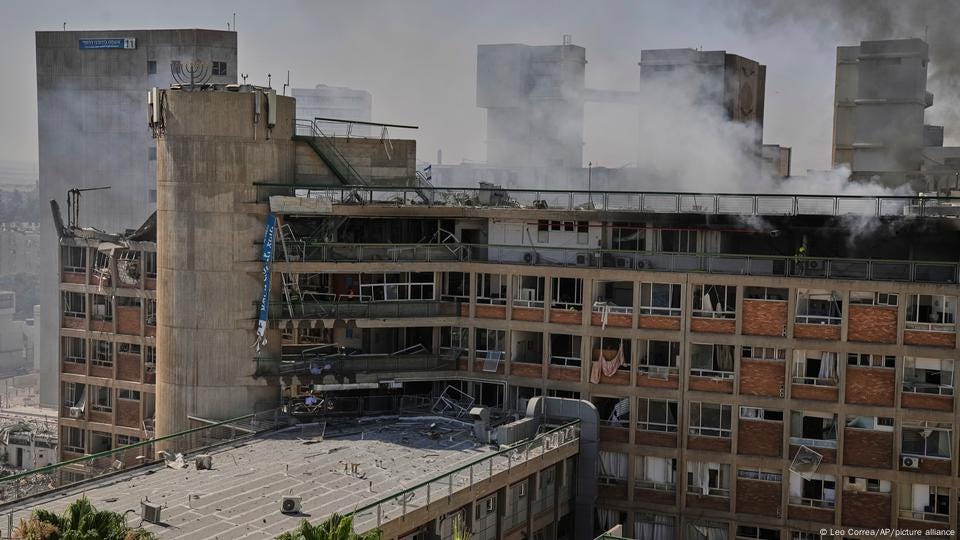Why Iran Keeps Targeting Be’er Sheva in Israel
The Be’er Sheva metropolitan area, including surrounding Bedouin communities, is home to an Arab population of roughly 35 percent.
Be’er Sheva, often called the “Silicon Valley” of the Middle East, has become a central focus in Iranian missile strikes. For three days in a row, Iran launched missiles including Sejjil, khorramshahr, Fattah, and other medium-range ballistic missiles aimed at Be’er Sheva. The targeting is not due to the city's size, but because of its strategic importance to Israel's military and technological infrastructure.
![[VIDEO] First Operational Use of Sejjil Missile by Iran Against Israel Signals Strategic Escalation [VIDEO] First Operational Use of Sejjil Missile by Iran Against Israel Signals Strategic Escalation](https://substackcdn.com/image/fetch/$s_!mYbi!,w_1456,c_limit,f_auto,q_auto:good,fl_progressive:steep/https%3A%2F%2Fsubstack-post-media.s3.amazonaws.com%2Fpublic%2Fimages%2F9d141a3d-5b92-431a-8081-fe3a1621b11a_643x633.jpeg)
Although Be’er Sheva is not the largest city in Israel, it is home to some of the country’s most critical defense assets. According to multiple open-source intelligence reports, it hosts the headquarters of the Israeli Defense Forces Command, Control, Communications, Computers, and Intelligence (C4i) Branch. It is also believed to be located near operations linked to Unit 8200, Israel’s elite cyber intelligence unit. Additionally, the city houses the Cyber Defense Directorate, which makes it a core center for Israel’s military and cyber command.
Earlier today, Iran struck the parking lot of a building on HaTvuna Street in Be’er Sheva. This location is near the Gav Yam Negev Advanced Technologies Park, Israel’s leading research and development center. The park is located next to Ben Gurion University and the C4i campus. The missile impact caused a fire and explosion, damaging nearby buildings facade.
Nearby is Ben Gurion University, recognized as a national leader in cybersecurity and artificial intelligence research. These institutions together form the backbone of Israel’s high-technology defense sector.
Yesterday, Iran inflicted heavy structural damage on Soroka Medical Center, which is also located in Be’er Sheva across from Ben Gurion University. In response to this, Iranian Foreign Minister Seyed Abbas Araghchi stated that the attack targeted the “Israeli Military Command and Intelligence Headquarters” along with another critical site. He described Soroka as a “military” facility that primarily “treats Israeli soldiers involved in combat in Gaza.”

Iran appears to be targeting Be’er Sheva not only for its operational military relevance but also for its symbolic value. By striking a city deep within southern Israel and far from the borders, Iran demonstrates its ability to reach the heart of Israeli defense infrastructure. This also suggests a deliberate effort to bypass Israel's multi-layered regional and domestic air defense systems. The message is clear: no part of Israel's strategic core is beyond reach.
In terms of demographics, the wider Be’er Sheva metropolitan area, which includes nearby Bedouin towns, has an Arab population of approximately 35%. However, the city proper remains overwhelmingly Jewish and is closely tied to Israel's defense and technology sectors.
Be’er Sheva is more than a southern Israeli city. It represents the center of the country’s digital warfare, intelligence capabilities, and defense innovation. For Iran, targeting Be’er Sheva is not only a tactical decision but also a strategic message intended to challenge Israel’s technological edge and to demonstrate deterrent capability.




